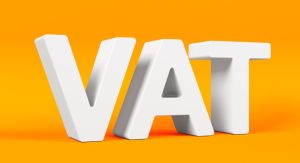VAT returns were always a little confusing for those new to the world of business. And the introduction of the new digitised system created even more uncertainty. But with this handy guide, you’ll know how to submit your VAT returns with confidence.
Understanding VAT Returns
A VAT return is a document summarizing a VAT-registered business’s sales and purchases during a specific VAT period. It shows how much is owed as well as how much can be claimed in VAT. All VAT return documents in the UK are submitted to HM Revenue and Customs (HMRC).

Does every business have to register for VAT? No. There is a VAT threshold in the UK of £90,000 (at the time of writing). If your business’s taxable turnover exceeds that amount in a 12-month period, you must register it for VAT. If it does not, you are not required to do so.
Making Tax Digital
Specialised software for VAT returns will ensure you comply with Making Tax Digital. This initiative by the UK government aims to fully digitise financial record-keeping and tax returns. Not only that, summaries are now sent to HMRC every quarter rather than just filing one tax return per year.
The deadline for submitting VAT returns is typically one calendar month and seven days after the end of that specific VAT period. And this is also the deadline by which businesses must pay any VAT owed to HMRC.
Essential Requirements for Online Filing
Before filing a VAT return, check that:
- Your business is indeed registered for VAT with HMRC. It doesn’t matter if you’re running a business from home or a huge warehouse; if your turnover exceeds the VAT threshold, then you have to register for VAT.
- You have a VAT registration number (you’ll have received one when registering for VAT). You’ll need it when you submit your VAT return so that HMRC can correctly associate the VAT return with your business.
- You have all the financial data for the VAT period you’re reporting on, to hand. VAT quarterly periods typically end on the last day of the months of March, June, September and December.
Steps to Calculate Your VAT Return

This is where your financial records come in, and why it is so crucial that you keep accurate records of all sales and purchases.
- Calculate the total VAT charged on sales of goods and services made by your business. This is called output VAT.
- Calculate the total VAT paid on purchases made by your business. This is called input VAT.
- Subtract the total input VAT from the output VAT. That means the total VAT paid on your business purchases must be subtracted from the total VAT charged on your business sales.
- If your output tax (VAT charged on sales) is higher, you’ll owe HMRC the difference. If your input tax (VAT paid on purchases) is higher, HMRC will owe you the difference — a VAT refund.
- Log in to your VAT account on the HMRC website to fill in a VAT form. Alternatively, you may download forms from the website.
Reporting VAT Due on Sales
The VAT return form asks you to fill in the VAT owed to HMRC for the specific VAT period.
This is the output VAT your business charged on sales of goods or services during that period. If your calculations showed that you charged more in VAT than you paid in VAT, the difference is what you owe the HMRC. Your VAT return is then considered a tax-due return.
Don’t stress if you have to pay VAT. There are other ways to reduce business tax in the UK and save money.
Reclaiming VAT on Purchases
The VAT return form also asks you to fill in the VAT owed to you by the HMRC for the specific VAT period.
This is the input VAT your business paid on purchases. If your calculations showed that you paid more in VAT than you charged in VAT, the difference is what you can claim from the HMRC. Your VAT return is considered a repayment return.
You may also claim VAT that you paid on goods imported from outside the UK for your business. However, you’ll need an import VAT certificate C79.
Benefits of Professional VAT Services
VAT can be a complex issue. This is especially true for companies that operate both in and outside the UK. For more information, check the UK government guidelines on this issue.
So, do you need to use professional VAT services to calculate and submit your VAT returns in the UK? No, but you may want to. However, whether you use professional VAT services or not, you will still need to use software compliant with the Making Tax Digital programme.




